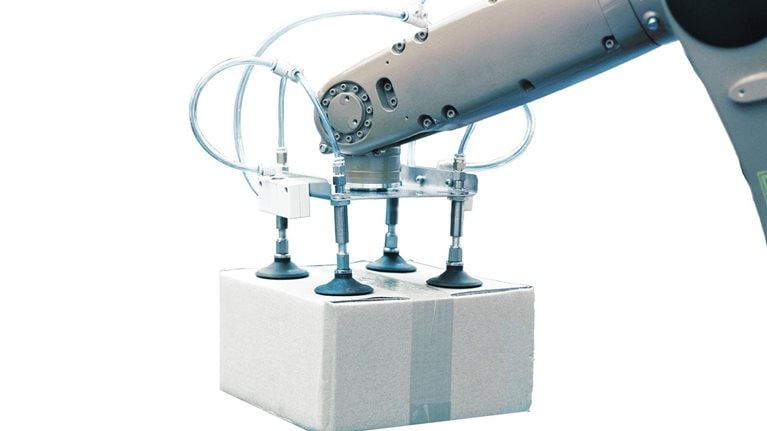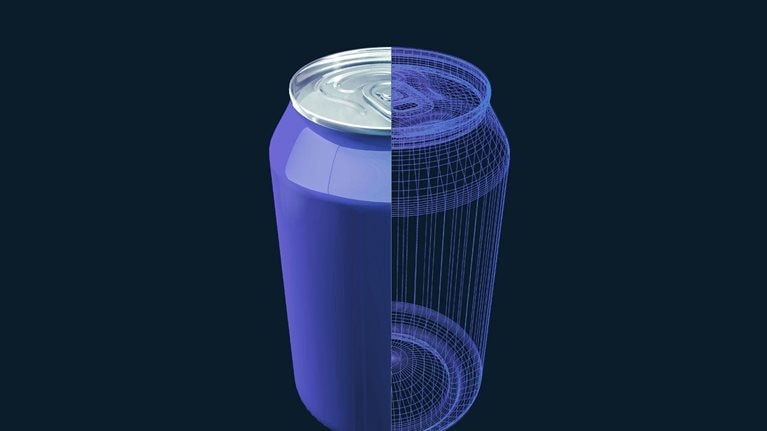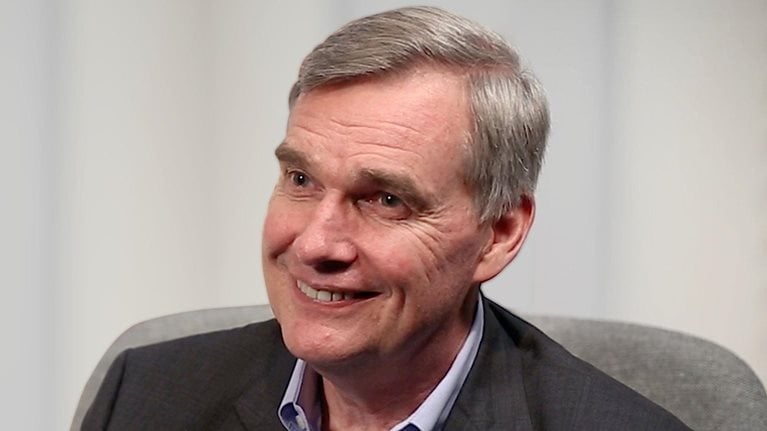Since 1960, Sealed Air has prospered by bringing innovation to the packaging industry, including Cryovac® packaging technology, Bubble Wrap® brand cushioning, and Jiffy® protective mailers.
Video: An interview with Sealed Air’s Ted Doheny
Interview
McKinsey: What are the important challenges in the packaging industry today? How do you think the industry will evolve?
Ted Doheny: From an industry perspective, the big challenge is this: How quickly can we innovate to save our customers money? From a more global perspective, it’s important to think about the tremendous amount of waste associated with packaging—sometimes arising from e-commerce or because things are over- or underpackaged. And there will always be concern about plastics. We can solve our toughest challenges with new innovations that leave our environment and society better than we found them. That should be the focus of the future industry.
The industry will find tremendous opportunities in driving innovation. Think about food. Over 30 percent of the food we grow and harvest is lost. We could work on packaging technologies to extend shelf life, or truck life, or plane life, or in the future, even drone life. It would change so much. The world is also becoming more automated, even in grocery stores, and packaging companies could help drive change there.
McKinsey: The packaging industry has moved from destroying value to creating value over the past 15 years. What are the most important steps you have taken to create value? And what should the industry do in the future?
Ted Doheny: Let’s first talk about economic value and how we create it. At Sealed Air, we changed the metrics on how we think about value. We’re focused on our return on invested capital (ROIC). We’re thinking: “How do we deploy our assets above our cost of capital and actually create value?”
We need to focus on innovation, since that will keep driving profitable growth and value creation. And if we’re not moving fast enough, that’s when we should think about M&A to fill the gap and drive more growth. But before a company undertakes any deals, it has to be financially solid. It has to be creating value.
McKinsey: How do you become a company that provides end-to-end solutions across equipment, materials, and service?
Ted Doheny: There’s a process. Before you become a solutions provider, you have to have tremendous products that actually create value for the customer. These products are essential to the next step—becoming a service player. Then, after you develop great services on top of your great products, you can provide solutions.
So it’s really an evolution. You take great products and reinvent them until they’re world class. You improve your service capabilities, sometimes using internet channels to provide even better customer interactions. All packaging companies need to get better on the digital-service side before they move to solutions. And that’s what we’ve been doing.
McKinsey: What steps is Sealed Air taking to improve sustainability?
Ted Doheny: Our mission statement says that we solve packaging’s most critical challenges with innovative solutions that leave our world better than we found it. We have a plastics pledge, and the goal is to have zero plastic waste. We have a timeline. The question is how do we get there from where we are today.
Our plastics pledge is opening up the door for innovations. We’re looking at materials and thinking about changing the components that go into packaging. We’re looking at how we make things, investigating digital technology, and helping our customers determine where they should dispose of their waste. We’re looking at recycling. We’re doing the right thing and opening some business opportunities in the process.
McKinsey: What opportunities are new technologies such as automation, artificial intelligence, and blockchain creating for the packaging industry?
Ted Doheny: It’s interesting. If you create a Venn diagram, packaging is actually at the center point where these disruptive technologies are converging. That’s because everything is put in a package. How does a package communicate with people who want to know what is inside, when it was filled, how much it weighs, whether it was stolen, and whether the contents are nearing their expiration? Packaging is the focal point of everything.
Think about blockchain. Packaging companies can use digital tools that note exactly when something went into a package. We can own that information and share it with customers, so they can trace the inputs and track the package. By providing that information, blockchain helps us add value.
Now think about automation. If a person loads a cart in a supermarket, they might get 15 or 20 items in it over a half hour. A robot is now under development that could work at ten times that pace. But it will need to be able to read the digital signature on packages for this to work. Beyond digital communication, we need to think about packaging materials that could help with automation. A robot hand might not be as soft as a human hand. So what packaging is required? We may have to design for both robots and humans.
McKinsey: How are you optimizing capital allocation?
Ted Doheny: For all our capital expenditures, we’re asking: What is the return on that capital? How does it drive productivity? How does it drive growth? How does it drive cost savings? We’re taking an end-to-end perspective. What’s happening in the factories? Could a new innovation help? What about M&A?
We have to reinvent our iconic products. Their good record doesn’t guarantee their future.
We now look at capital allocation collectively, at the company level, instead of considering it by division and region. The new process is more holistic. We’re also trying to improve capital allocation by driving process breakthroughs. We’re not looking for incremental improvements that might make a process 5 percent better. We’re considering full process redesigns. We want people to think out of the box.
Say we’re looking at a customer’s specifications. It calls for protective material, a box, and instruction books. Maybe we could think of a new design that dramatically lowers the cost. That same thing goes for internal operations. Could we move to fully automated systems that improve processes? If so, capital should flow to release the automation and increase our returns.
McKinsey: How do you balance the tension between short- and long-term benefits when making investment decisions?
Ted Doheny: We rely on numbers and consider risk issues in combination with the timeline. An innovation might be associated with a lot of risk. And if it takes a long time to implement, we won’t immediately see returns on our investment. But we need to consider the whole picture. Is the innovation a game changer? Will it transform the company and help us jump past the competition? So there is a financial component to our decisions, and some discipline. But our own judgment also plays a role.
As we innovate, we need to fail faster. We shouldn’t keep moving forward if our work doesn’t appear promising. We can learn from our failures. Many of the products we create require a lot of testing and FDA approval. That will always be the case, and our products will always take a long time to develop. But if an innovation isn’t working, it doesn’t have to go through the full process. We can stop development. We have to increase our failure rate.
The future of packaging: Smart bottles, edible boxes
McKinsey: You have spoken of the “four Ps” in reference to Sealed Air and the company’s transformation. Tell me a little about them.
Ted Doheny: We’re reinventing the entire company—and that’s not meant to scare anyone. We’re going to have a new way of organizing that relates to what we call the four Ps. The first one is performance. We’re changing our metrics and our focus to ensure that we are a world-class company serving the packaging industry. We’re targeting 40 percent operating leverage. We want to beat our cost of capital. And we will have one bonus pool for all teams.
The second P is process. We want to have common, world-class processes and benchmarks by area, function, and yield. But how will we define world class? How far away are we? The process change will happen throughout the whole company.
The third P relates to products. We have to reinvent our iconic products. Their good record doesn’t guarantee their future. Where we’ve lost our patents, we’re going to have to reinvent, and we’ll need more significant innovation with our iconic brands. We need to reinvent Bubble Wrap®, reinvent Cryovac®.
The fourth P is really important—that’s our people, and we want to reinvent our culture. As a new CEO, I had some meetings with the people on the management team to discuss how we could work as a team or individually, to reinvent the company’s culture.
The essence of the four Ps is to drive sustainability and our positive impact on society. What we do affects the world we live in, and that’s important. The more we address sustainability and social issues, the stronger the company becomes. It’s the right thing to do.
McKinsey: You’ve already talked about the industry’s future. What do you see as the greatest opportunities and challenges for Sealed Air over the next few years?
Ted Doheny: We have to combine our vision and strategy with strong execution. If a company has goals but doesn’t execute on them, they’re dreaming. But if they move to implementation without first having a clear vision and strategy, it’s a nightmare. It simply won’t execute well.
We have a clear vision and strategy, but there could be some macroeconomic issues that affect implementation. For instance, are there certain tariffs that could force us to change our supply base? We have to deal with those things. But what’s exciting to me about our business is that we’re connected to our customers— some of the major companies in the world. If their CEOs have a packaging issue, they get us in there. I think if we stay connected to our customers at the highest levels, we can fight through any implementation obstacles and gain some great opportunities.
McKinsey: What are the most important things you’ve learned about being a CEO?
Ted Doheny: I’m a second-time CEO. From day one, when you take over, you’re responsible for every problem in the company. When I started at Sealed Air, I knew that I had to move fast, address every problem, and delegate to make that happen. There’s always the fear that someone is moving faster than you are.
The most important thing is to find the right people, get a strong team in place, and execute. This is my second time around with a transformation, and my speed is probably twice as fast.
McKinsey: What are three things about you that we wouldn’t have guessed?
Ted Doheny: Although I’m a CEO, you might be surprised to know that I’m a private person who sometimes doesn’t want to do interviews! Second, I’m an entrepreneur trapped in a big company. I had my own business as a kid, selling fruits and vegetables, and that helped pay my way through college. My longtime friends can’t believe I’m still with a big company. People who don’t know me probably wouldn’t realize that. Third? I guess I’d say that I’m something of a frustrated athlete. As a kid, being an athlete was my identity. I had to give that up, and I still have some regrets.
McKinsey: One last question. How does it feel to have an unlimited supply of Bubble Wrap® to pop?
Ted Doheny: I have wonderful memories of my mom popping Bubble Wrap® therapeutically. How do I feel about my unlimited supply? It’s motivating me to develop sealedair.com. It makes me want to make Bubble Wrap® easily available at any time, anywhere, to anybody. We need to make that experience easy to get.
For more on this topic, see The future of packaging: Smart bottles, edible boxes.


